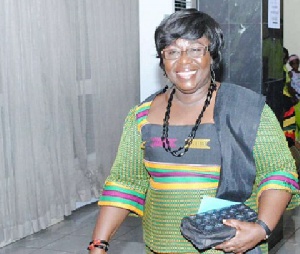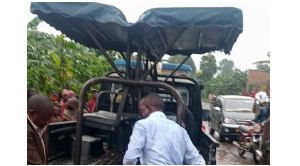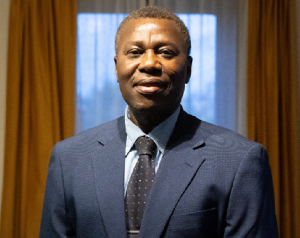Government has noted that in view of the many dimensions to child labour in the country, there was the need for a holistic approach towards eliminating all worst forms of child labour in Ghana by 2025.
Addressing participants at a National Policy Durbar to mark this year's World Day against Child Labour, in Accra, on Monday, Madam Akosua Frema Osei-Opare, the Chief of Staff, called for mobilisation of resources for the implementation of second phase of the National Plan of Action against all worst forms of child labour.
She said Ghana had put in place the necessary legal infrastructure such as legal frame work, policy direction, capacity building and programmes to fight the menace of child labour.
Therefore, she said, there was the need for coordinated action by all relevant stakeholders to achieve the set goals.
On 12 June every year, the International Community marks the World Day against Child Labour to raise awareness on the millions of girls and boys who were under labour exploitation.
The global theme for this year's event is : "In Conflicts and Disasters, Protect Children from Child Labour", while Ghana chose "Mobilising Resources for Effective Implementation of the National Plan of Action Against Child Labour NPA Two" as its national theme.
The Chief of Staff noted that pervasive poverty had compelled many families to engage their children from five to 17 years in hazardous Labour that was injurious to their health, mental and psychological wellbeing.
Therefore, she said, Government was committed to ending all forms of child labour by 2025, and called on all stakeholders including Non-Governmental Organisations , the media, religious bodies and the international partners to come on-board to achieve the objective.
"We need to galvanise the support of all stakeholders who will support this efforts by way of their time, knowledge, energies and financial might to achieve the NPA Two," she said.
She said there were people with high social stature, academic standards and parents who could not comprehend the gravity of the situation and justified child labour with cultural and traditional practices and thus, exposed children to the harsh realities of life.
She therefore tasked research institutions and universities to prioritise study on the phenomenon of child labour in the country and how internal conflicts were impacting on children's welfare.
Mr Bright Wireko-Brobby, the Deputy Minister of Employment and Labour Relations, explained that children engaged in child labour were prevented from acquiring basic literacy and numeracy education as well as technical and vocational skills thereby limiting their career opportunities and employability and future livelihoods.
He said the government was committed to protecting children's rights and complying with the child Labour laws and regulations and international conventions such as the Children's Act, Human Trafficking Act, Convention on the Rights of the Child among other international conventions ratified by the nation.
The Deputy Minister said the implementation of capitation grant, School Feeding Programme and the free Senior High School policy in the next academic year would help in empowering the youth to gain employable skills and support government's quest to ending child labour.
Globally, more than 1.5 billion people live in countries that are affected by conflict, violence and fragility.
At the same time, about 200 million people are affected by disasters every year, which a third of them are children. A significant proportion of 168 million children engaged in child labour live in areas affected by conflict and disasters.
In Ghana, while armed conflicts and major physical natural disasters had not been frequent events, social conflicts stemming out of poverty and under-development in many rural communities, including floods, collapsing of mining pits and devastation of farms by pests among others, had exposed children of school-going-age to child Labour.
It is estimated that one out of five children engaged in child labour in the country which translated into 1.9 million of the population.
The term "child labour" is often defined as work that deprived children of their childhood, potential and dignity, and activities that are harmful to their physical and mental development.



General News of Tuesday, 13 June 2017
Source: GNA
'We need holistic approach to combat child labour' - Chief of Staff
 Akosua Frema Osei-Opare said poverty has caused many families to engage their children in had labour
Akosua Frema Osei-Opare said poverty has caused many families to engage their children in had labour












